a186471985faf878d95c56320c6b1929.ppt
- Количество слайдов: 83
 Taming the Trend: How to Strategically Green Your Schools Beth Penfield, LEED AP - Brailsford & Dunlavey Willard Mangrum- Brailsford & Dunlavey
Taming the Trend: How to Strategically Green Your Schools Beth Penfield, LEED AP - Brailsford & Dunlavey Willard Mangrum- Brailsford & Dunlavey
 Taming the Trend: How to Strategically Green Your Schools AGENDA: § Green Schools Introduction § LEED for Schools Review § DCPS Case Study § Green Charrette Activity § Wrap Up
Taming the Trend: How to Strategically Green Your Schools AGENDA: § Green Schools Introduction § LEED for Schools Review § DCPS Case Study § Green Charrette Activity § Wrap Up
 The Council of Educational Facility Planners International (CEFPI) is a Registered Provider with The American Institute of Architects Continuing Education Systems. Credit earned on completion of this program will be reported to CES Records for AIA members. Certificates of Completion for non-AIA members are available on request. This program is registered with the AIA/CES for continuing professional education. As such, it does not include content that may be deemed or construed to be an approval or endorsement by the AIA of any material of construction or any method or manner of handling, using, distributing, or dealing in any material or product. Questions related to specific materials, methods, and services will be addressed at the conclusion of this presentation.
The Council of Educational Facility Planners International (CEFPI) is a Registered Provider with The American Institute of Architects Continuing Education Systems. Credit earned on completion of this program will be reported to CES Records for AIA members. Certificates of Completion for non-AIA members are available on request. This program is registered with the AIA/CES for continuing professional education. As such, it does not include content that may be deemed or construed to be an approval or endorsement by the AIA of any material of construction or any method or manner of handling, using, distributing, or dealing in any material or product. Questions related to specific materials, methods, and services will be addressed at the conclusion of this presentation.
 Copyright Materials This presentation is protected by US and International Copyright laws. Reproduction, distribution, display and use of the presentation without written permission of the speaker is prohibited. Brailsford & Dunlavey © 2009
Copyright Materials This presentation is protected by US and International Copyright laws. Reproduction, distribution, display and use of the presentation without written permission of the speaker is prohibited. Brailsford & Dunlavey © 2009
 Taming the Trend: How to Strategically Green Your Schools Learning Objectives Better face the challenges of greening your schools through the lessons learned in the greening of the District of Columbia’s Public Schools. Recognize the importance of systematic strategy development in implementing a green schools plan. Learn how to successfully engage stakeholders in sustainability prioritization.
Taming the Trend: How to Strategically Green Your Schools Learning Objectives Better face the challenges of greening your schools through the lessons learned in the greening of the District of Columbia’s Public Schools. Recognize the importance of systematic strategy development in implementing a green schools plan. Learn how to successfully engage stakeholders in sustainability prioritization.
 Green Schools Green School – “a school building or facility that creates a healthy environment that is conducive to learning while saving energy, resources, and money. ” (USGBC 2008) The two most important factors that make a school green: “the planning process by which the school is designed, and the standards used to construct and operate the building. ” (American Federation of Teachers 2008)
Green Schools Green School – “a school building or facility that creates a healthy environment that is conducive to learning while saving energy, resources, and money. ” (USGBC 2008) The two most important factors that make a school green: “the planning process by which the school is designed, and the standards used to construct and operate the building. ” (American Federation of Teachers 2008)
 Being strategic…. “Strategy is not a detailed plan or program of instructions; it is a unifying theme that gives coherence and direction to the actions and decisions of an individual or organization. ” -Robert M. Grant Contemporary Strategy Analysis (2005) It’s about being proactive…. …. and not reactive.
Being strategic…. “Strategy is not a detailed plan or program of instructions; it is a unifying theme that gives coherence and direction to the actions and decisions of an individual or organization. ” -Robert M. Grant Contemporary Strategy Analysis (2005) It’s about being proactive…. …. and not reactive.
 Being successfully strategic…. A strategy must be consistent with: The characteristics of the external environment The characteristics of the internal environment Goals & values Resources & capabilities Structure & systems Internal Externa l
Being successfully strategic…. A strategy must be consistent with: The characteristics of the external environment The characteristics of the internal environment Goals & values Resources & capabilities Structure & systems Internal Externa l
 Green Schools Pop Quiz!
Green Schools Pop Quiz!
 Question: How many students are enrolled in K-12 in the US? How many teachers in the US? How many public schools? private schools? Average of a US educational building?
Question: How many students are enrolled in K-12 in the US? How many teachers in the US? How many public schools? private schools? Average of a US educational building?
 Answer: According US Census Bureau: 56 million students enrolled this Fall 7. 2 million teachers in 2008 98, 793 public schools (06 -07) 28, 219 private schools (07 -08) 63. 2 million occupants in 127, 012 K-12 facilities daily According to a 1999 US Dept. of Ed study the average of US school building was 40 years old and 1 -in-4 schools reported at least one part of their facility to be “less than adequate”
Answer: According US Census Bureau: 56 million students enrolled this Fall 7. 2 million teachers in 2008 98, 793 public schools (06 -07) 28, 219 private schools (07 -08) 63. 2 million occupants in 127, 012 K-12 facilities daily According to a 1999 US Dept. of Ed study the average of US school building was 40 years old and 1 -in-4 schools reported at least one part of their facility to be “less than adequate”
 Question: What is the leading cause of absenteeism in the US? About how many days (total) a year? At what age does the developmental skill to focus on speech sounds mature?
Question: What is the leading cause of absenteeism in the US? About how many days (total) a year? At what age does the developmental skill to focus on speech sounds mature?
 Answer: With an estimated 6 million children, Asthma accounts for mare than 14 million missed school days each year! The developmental skill to focus on speech sounds matures between 13 – 15 years; thus younger children require quieter and less reverberant conditions than do adults.
Answer: With an estimated 6 million children, Asthma accounts for mare than 14 million missed school days each year! The developmental skill to focus on speech sounds matures between 13 – 15 years; thus younger children require quieter and less reverberant conditions than do adults.
 Group Survey Question: What do YOU believe are the top obstacles for building green educational facilities? CEFPI Survey (2006) Turner Construction Survey (2008) First Costs Higher (87%) Cost & Time To Get Approved (60%) Higher Construction Costs (50%) Payback too long (50%) Different Budget Accounting – Capital vs Operating (45%) Cost & documentation for LEED Certification (54%) Lack of awareness of benefits (48%) Difficulty in quantifying benefits (43%)
Group Survey Question: What do YOU believe are the top obstacles for building green educational facilities? CEFPI Survey (2006) Turner Construction Survey (2008) First Costs Higher (87%) Cost & Time To Get Approved (60%) Higher Construction Costs (50%) Payback too long (50%) Different Budget Accounting – Capital vs Operating (45%) Cost & documentation for LEED Certification (54%) Lack of awareness of benefits (48%) Difficulty in quantifying benefits (43%)
 LEED® for Schools
LEED® for Schools
 LEED® for Schools USGBC Green Building Rating System required for K-12 New Construction & Major Renovations Set of performance standards for certifying the design and construction phases of school buildings Intent: “to assist in the creation of high performance, healthful, durable, affordable, and environmentally sound school buildings. ” (LEED-S 2007 p 15)
LEED® for Schools USGBC Green Building Rating System required for K-12 New Construction & Major Renovations Set of performance standards for certifying the design and construction phases of school buildings Intent: “to assist in the creation of high performance, healthful, durable, affordable, and environmentally sound school buildings. ” (LEED-S 2007 p 15)
 LEED® for Schools What percent of the US school building inventory is LEED certified? 0. 0014 %
LEED® for Schools What percent of the US school building inventory is LEED certified? 0. 0014 %
 LEED® for Schools 11 ____ school projects have been certified through the USGBC’s LEED for Schools program. 181 ____ school projects have been certified through one of the USGBC’s LEED programs (EB, CI, NC, S) *includes youth education/daycare 841 ____ school projects have been registered through the USGBC’s LEED for Schools program. Source: USGBC (August 1, 2009) (3) Certified (2) Silver (6) Gold (63) Certified (56) Silver (58) Gold (7) Platinum
LEED® for Schools 11 ____ school projects have been certified through the USGBC’s LEED for Schools program. 181 ____ school projects have been certified through one of the USGBC’s LEED programs (EB, CI, NC, S) *includes youth education/daycare 841 ____ school projects have been registered through the USGBC’s LEED for Schools program. Source: USGBC (August 1, 2009) (3) Certified (2) Silver (6) Gold (63) Certified (56) Silver (58) Gold (7) Platinum
 LEED® for Schools Green Building Guidelines: Prerequisites & Credits Sustainable Sites Water Efficiency Energy & Atmosphere Materials & Resources Indoor Environmental Quality Innovation in Design
LEED® for Schools Green Building Guidelines: Prerequisites & Credits Sustainable Sites Water Efficiency Energy & Atmosphere Materials & Resources Indoor Environmental Quality Innovation in Design
 LEED® for Schools LEED for New Construction PLUS: SS: Environmental Site Assessment, Site Master Plan, Joint Use of Facilities WE: Process Water Use Reduction IEQ: Minimum & Enhanced Acoustical Performance, Low-Emitting Materials: Furniture & Furnishings and Ceiling & Wall Systems, Mold Prevention
LEED® for Schools LEED for New Construction PLUS: SS: Environmental Site Assessment, Site Master Plan, Joint Use of Facilities WE: Process Water Use Reduction IEQ: Minimum & Enhanced Acoustical Performance, Low-Emitting Materials: Furniture & Furnishings and Ceiling & Wall Systems, Mold Prevention
 LEED® for Schools LEED for Schools 2007 73 base points; 6 possible Innovation in Design points 9 prerequisites LEED for Schools 2009 Certified Silver Gold Platinum 29 – 36 points 37 – 43 points 44 – 57 points 58 + points 100 base points; 6 possible Innovation in Design & 4 Regional Priority points 10 prerequisites Certified 40 – 49 points Silver 50 – 59 points Gold 60 – 79 points Platinum 80+ points
LEED® for Schools LEED for Schools 2007 73 base points; 6 possible Innovation in Design points 9 prerequisites LEED for Schools 2009 Certified Silver Gold Platinum 29 – 36 points 37 – 43 points 44 – 57 points 58 + points 100 base points; 6 possible Innovation in Design & 4 Regional Priority points 10 prerequisites Certified 40 – 49 points Silver 50 – 59 points Gold 60 – 79 points Platinum 80+ points
 Case Study: Greening DCPS Washington DC DCPS Cooke ES
Case Study: Greening DCPS Washington DC DCPS Cooke ES
 Greening of the District Legislation & Regulatory Action LEED-S Silver Green Building Act of 2006 Clean & Affordable Energy Act of 2008 Greened Construction Code Roll Out Lead Hazard Prevention and Elimination Act of 2008 Comprehensive Stormwater Management Enhancement Amendment Act of 2008
Greening of the District Legislation & Regulatory Action LEED-S Silver Green Building Act of 2006 Clean & Affordable Energy Act of 2008 Greened Construction Code Roll Out Lead Hazard Prevention and Elimination Act of 2008 Comprehensive Stormwater Management Enhancement Amendment Act of 2008
 Greening the District Mayor’s Green Agenda: The Mayor’s governmentwide agenda to create a model of urban sustainability Parks & Natural Space Government & City Operations Homes Business, Jobs & Economic Development Transportation & Mobility Schools Neighborhoods & Community
Greening the District Mayor’s Green Agenda: The Mayor’s governmentwide agenda to create a model of urban sustainability Parks & Natural Space Government & City Operations Homes Business, Jobs & Economic Development Transportation & Mobility Schools Neighborhoods & Community
 Greening of the District Green School Vision To provide green, healthy school buildings and schoolyards for every student in the district. Schools should be the focus of community-based sustainability education and awareness to prepare youth and adult learners to benefit from an increasingly green local economy.
Greening of the District Green School Vision To provide green, healthy school buildings and schoolyards for every student in the district. Schools should be the focus of community-based sustainability education and awareness to prepare youth and adult learners to benefit from an increasingly green local economy.
 DC Public Schools § 50, 000 + Students & Staff in DCPS facilities § Current Inventory of 120 Facilities: § § § 62 Elementary Schools 12 Middle Schools 18 Senior High Schools More than 50 Million Hours Annually Spent Inside School Facilities by Students & Staff § 22 PK-9 Schools § 6 Special Education Centers More than 12. 5 Million Square Feet to Green
DC Public Schools § 50, 000 + Students & Staff in DCPS facilities § Current Inventory of 120 Facilities: § § § 62 Elementary Schools 12 Middle Schools 18 Senior High Schools More than 50 Million Hours Annually Spent Inside School Facilities by Students & Staff § 22 PK-9 Schools § 6 Special Education Centers More than 12. 5 Million Square Feet to Green
 DC Public Schools Pre School Reform § Turnover of Superintendents / Director of Facilities § Lack of dedicated funding source for capital projects § Historically plagued with mounting deferred maintenance challenges 118 out of 142 schools rated in “poor” condition or worse in 2005
DC Public Schools Pre School Reform § Turnover of Superintendents / Director of Facilities § Lack of dedicated funding source for capital projects § Historically plagued with mounting deferred maintenance challenges 118 out of 142 schools rated in “poor” condition or worse in 2005
 DC Public Schools School Reform § Summer 2007 D. C. Mayor Adrian Fenty used authority of the Public Education Reform Act of 2007 § Public Schools (DCPS) shifted away from an autonomous school board to the city government → Created Office of the Chancellor & hired Michelle Rhee → Created Office of Public Education Facilities Modernization (OPEFM) & hired Allen Lew
DC Public Schools School Reform § Summer 2007 D. C. Mayor Adrian Fenty used authority of the Public Education Reform Act of 2007 § Public Schools (DCPS) shifted away from an autonomous school board to the city government → Created Office of the Chancellor & hired Michelle Rhee → Created Office of Public Education Facilities Modernization (OPEFM) & hired Allen Lew
 Office of Public Education Facilities Modernization Charged with the modernization of a system comprised of 142 school buildings
Office of Public Education Facilities Modernization Charged with the modernization of a system comprised of 142 school buildings
 OPEFM’s Charge § Assume management of budget exceeding $2. 4 billion funding: § § § Former 10 - to 15 year Capital Improvement Program, An initial stabilization program to correct major life safety, environmental, and security issues Immediate assumption of management over capital improvement projects already initiated, exceeding $650 million in project costs
OPEFM’s Charge § Assume management of budget exceeding $2. 4 billion funding: § § § Former 10 - to 15 year Capital Improvement Program, An initial stabilization program to correct major life safety, environmental, and security issues Immediate assumption of management over capital improvement projects already initiated, exceeding $650 million in project costs
 OPEFM’s Charge § § § Analyze and Refine 2006 Master Facilities Plan and Capital Improvement Plan for Approval by DC Council Achievement of Leadership in Energy and Environmental Design (LEED) Silver certification for all Modernization projects Local Business Contracting Goal for CBE of 50%
OPEFM’s Charge § § § Analyze and Refine 2006 Master Facilities Plan and Capital Improvement Plan for Approval by DC Council Achievement of Leadership in Energy and Environmental Design (LEED) Silver certification for all Modernization projects Local Business Contracting Goal for CBE of 50%
 OPEFM & Greening DCPS Hurdles & Challenges to Greening § § Lack of inclusions for LEED for Schools General unfamiliarity with LEED Large un-modernized building stock Unclear utility tracking
OPEFM & Greening DCPS Hurdles & Challenges to Greening § § Lack of inclusions for LEED for Schools General unfamiliarity with LEED Large un-modernized building stock Unclear utility tracking
 OPEFM & Greening DCPS § Modernizations in process without specific inclusions for LEED : → Inclusion of green design elements within in progress schools → Initiate changes to ensure Silver and higher certification in 6 projects § Outdated Design Guidelines → “Green” 2006 Design Guidelines – “Slam Dunk Score Card” → Evaluation of alternative finishes and materials
OPEFM & Greening DCPS § Modernizations in process without specific inclusions for LEED : → Inclusion of green design elements within in progress schools → Initiate changes to ensure Silver and higher certification in 6 projects § Outdated Design Guidelines → “Green” 2006 Design Guidelines – “Slam Dunk Score Card” → Evaluation of alternative finishes and materials
 OPEFM & Greening DCPS § MFP & CIP with Outdated Budgets → Inclusion of Green Goals within MFP → Budget re-evaluation for high performance schools § General unfamiliarity with LEED & implications for following the guidelines → Hiring and Training of PM Team & Consultants → Partnership with the Office of the Chancellor, DDOE, USGBC, & Clinton Climate Initiative → Implementation of pilot programs
OPEFM & Greening DCPS § MFP & CIP with Outdated Budgets → Inclusion of Green Goals within MFP → Budget re-evaluation for high performance schools § General unfamiliarity with LEED & implications for following the guidelines → Hiring and Training of PM Team & Consultants → Partnership with the Office of the Chancellor, DDOE, USGBC, & Clinton Climate Initiative → Implementation of pilot programs
 OPEFM & Greening DCPS § Large un-modernized building stock → Adaptive Reuse Philosophy → Closing and Consolidations → Phased Approach § Then: 142 Now: 120 Utility tracking → Collaboration with District Agencies → Consideration of LEED - Existing Buildings
OPEFM & Greening DCPS § Large un-modernized building stock → Adaptive Reuse Philosophy → Closing and Consolidations → Phased Approach § Then: 142 Now: 120 Utility tracking → Collaboration with District Agencies → Consideration of LEED - Existing Buildings
 OPEFM & Greening DCPS Overall Sustainable Approach High performance and safe learning environments Schools as teaching tools for students, staff, & community Continued review of methodologies & guidelines
OPEFM & Greening DCPS Overall Sustainable Approach High performance and safe learning environments Schools as teaching tools for students, staff, & community Continued review of methodologies & guidelines
 5 - Minute Break
5 - Minute Break
 The Greening of HD Cooke Elementary School
The Greening of HD Cooke Elementary School
 The Greening of HD Cooke ES Scope of Work: Full modernization of existing building (1909 and 1960’s wing) and construction of a new addition (gymnasium, cafeteria, and food service area) Project Data Existing Building: 64, 000 SF New Building: 22, 000 SF Total: 86, 000 SF Previous Enrollment: 284 Pre. S – 6 th Modernized Enrollment: 442 Pre. S – 5 th
The Greening of HD Cooke ES Scope of Work: Full modernization of existing building (1909 and 1960’s wing) and construction of a new addition (gymnasium, cafeteria, and food service area) Project Data Existing Building: 64, 000 SF New Building: 22, 000 SF Total: 86, 000 SF Previous Enrollment: 284 Pre. S – 6 th Modernized Enrollment: 442 Pre. S – 5 th
 HD Cooke ES – May 2008
HD Cooke ES – May 2008
 HD Cooke ES – August 2009
HD Cooke ES – August 2009
 HD Cooke ES – September 2009
HD Cooke ES – September 2009
 New Construction: Gymnasium
New Construction: Gymnasium

 HD Cooke Timeline 80% Construction Documents Design / Build Contract May 2007 Building Permit LEED-S Change Order October 2007 OPEFM assumed control of project Design Development December 2007 January 2008 100% Construction Documents March 2008 Substantial Completion May 2008 Enhanced Commissioning Contract July 2009 August 2009 Occupancy
HD Cooke Timeline 80% Construction Documents Design / Build Contract May 2007 Building Permit LEED-S Change Order October 2007 OPEFM assumed control of project Design Development December 2007 January 2008 100% Construction Documents March 2008 Substantial Completion May 2008 Enhanced Commissioning Contract July 2009 August 2009 Occupancy
 HD Cooke Budget Total Budget: $35 million Hard Costs: $25 million - $290 / SF Soft Costs: $10 million LEED Change Order’s: $620, 500 2. 5% of Hard Costs: LEED Third Party Consultant & Enhanced Commissioning Lighting Controls, Acoustic Panels, Walk Off Mats, Bike Racks, Recycling Area Canopies, and Certified Wood Other Scope Change Order’s: $2, 000 8% of Hard Costs: Terrazzo Tile, Upgraded Rubber Flooring, New Windows
HD Cooke Budget Total Budget: $35 million Hard Costs: $25 million - $290 / SF Soft Costs: $10 million LEED Change Order’s: $620, 500 2. 5% of Hard Costs: LEED Third Party Consultant & Enhanced Commissioning Lighting Controls, Acoustic Panels, Walk Off Mats, Bike Racks, Recycling Area Canopies, and Certified Wood Other Scope Change Order’s: $2, 000 8% of Hard Costs: Terrazzo Tile, Upgraded Rubber Flooring, New Windows
 HD Cooke & Turning LEED Mid-Design Factors for Success Responsible Design / Build Team Recycled Content and Regional Materials Reuse of 95% of Existing Structure Water Efficient Fixtures and Landscaping Diversion of construction waste from Landfills Stake Holders Community Investment & Interest “Carrot” of Being One of the First LEED-S Project Collegial Project Team Budget Support
HD Cooke & Turning LEED Mid-Design Factors for Success Responsible Design / Build Team Recycled Content and Regional Materials Reuse of 95% of Existing Structure Water Efficient Fixtures and Landscaping Diversion of construction waste from Landfills Stake Holders Community Investment & Interest “Carrot” of Being One of the First LEED-S Project Collegial Project Team Budget Support
 HD Cooke & Turning LEED Mid-Design Factors Against Success Administration Change Over New Principal & Restructuring School Project as OPEFM “Guinea Pig” No Manual or Lessons Learned to Use Change Order Process Liability for Design and USGBC Review Timing and Council Approval Limited LEED Experience / APs
HD Cooke & Turning LEED Mid-Design Factors Against Success Administration Change Over New Principal & Restructuring School Project as OPEFM “Guinea Pig” No Manual or Lessons Learned to Use Change Order Process Liability for Design and USGBC Review Timing and Council Approval Limited LEED Experience / APs
 HD Cooke & Green Design Sustainable Sites: 11 Points Site Selection, Development Density, Brownfield Redevelopment, Alternative Transportation, Stormwater Design, Joint Use of Facilities Water Efficiency: 5 Points Water Efficient Landscaping, 40% Water Use Reduction Energy & Atmosphere: 9 - 10 Points Fundamental & Enhanced Commissioning, 28% / 21% Energy Efficiency, Enhanced Refrigerant Management, Green Power
HD Cooke & Green Design Sustainable Sites: 11 Points Site Selection, Development Density, Brownfield Redevelopment, Alternative Transportation, Stormwater Design, Joint Use of Facilities Water Efficiency: 5 Points Water Efficient Landscaping, 40% Water Use Reduction Energy & Atmosphere: 9 - 10 Points Fundamental & Enhanced Commissioning, 28% / 21% Energy Efficiency, Enhanced Refrigerant Management, Green Power
 HD Cooke & Green Design Materials & Resources: 8 Points Recycling, 95% Building Reuse of Existing Walls, Floors & Roof, Construction Waste Management w/ >75% Diversion, >10% Recycled Content, >20% Regional Materials, Certified Wood Indoor Environmental Quality: 15 – 16 Points IAQ Performance, Enhanced Acoustical Performance, Outdoor Air Delivery Monitoring, Construction IAQ Mgt Plan, Low Emitting Materials, Indoor Chemical & Pollutant Source Control, Controllability of Systems, Thermal Comfort, Daylight & Views, Mold Prevention
HD Cooke & Green Design Materials & Resources: 8 Points Recycling, 95% Building Reuse of Existing Walls, Floors & Roof, Construction Waste Management w/ >75% Diversion, >10% Recycled Content, >20% Regional Materials, Certified Wood Indoor Environmental Quality: 15 – 16 Points IAQ Performance, Enhanced Acoustical Performance, Outdoor Air Delivery Monitoring, Construction IAQ Mgt Plan, Low Emitting Materials, Indoor Chemical & Pollutant Source Control, Controllability of Systems, Thermal Comfort, Daylight & Views, Mold Prevention
 HD Cooke & Green Design Innovation & Design Process: 4 – 6 Points LEED Accredited Professional School as a Teaching Tool Innovation: Certified Silver Gold Platinum Exemplary Performance – Alternative Transportation Exemplary Performance - 70 % Green Power Exemplary Performance – 40% Regional Materials Green Cleaning 29 – 36 Points 37 – 43 Points 44 – 57 Points 58 – 79 Points Cooke 52 – 56 Points $620, 500 in Change Orders 2. 5% of original GMP
HD Cooke & Green Design Innovation & Design Process: 4 – 6 Points LEED Accredited Professional School as a Teaching Tool Innovation: Certified Silver Gold Platinum Exemplary Performance – Alternative Transportation Exemplary Performance - 70 % Green Power Exemplary Performance – 40% Regional Materials Green Cleaning 29 – 36 Points 37 – 43 Points 44 – 57 Points 58 – 79 Points Cooke 52 – 56 Points $620, 500 in Change Orders 2. 5% of original GMP
 Lessons Learned: OPEFM & HD Cooke
Lessons Learned: OPEFM & HD Cooke
 Lessons Learned 1 - School as a Teaching Tool § Issue: OPEFM cannot promise this point on behalf of DCPS § Do not assume everyone is open to accepting green initiatives because its “good” – competing interests exist § Design / LEED Consulting Team - difficulty in understanding this relationship § Start discussions for green curriculum early to succeed and be persistent when pursuing change § RECOMMENDATION Creation of cross agency committee to discuss issues and keep communications open; Identify leader & decision makers; Recognize that the process is slow and buy in is important to properly manage expectations.
Lessons Learned 1 - School as a Teaching Tool § Issue: OPEFM cannot promise this point on behalf of DCPS § Do not assume everyone is open to accepting green initiatives because its “good” – competing interests exist § Design / LEED Consulting Team - difficulty in understanding this relationship § Start discussions for green curriculum early to succeed and be persistent when pursuing change § RECOMMENDATION Creation of cross agency committee to discuss issues and keep communications open; Identify leader & decision makers; Recognize that the process is slow and buy in is important to properly manage expectations.
 Lessons Learned 2 - Contractual Relationships and Strategic Implementation § Issue: LEED Certification implemented as change order to existing contract, thus every LEED related item is an add ($$$$) § Used green language in RFP process §Need to fully integrate into design and construction contracts § Set clear green goals and objectives with entire project team § Owner / Owner Representative knowledgeable of LEED process and building guidelines RECOMMENDATION Revised Contracts; LEED AP training for all Project Managers / Owner’s Representatives; “Greening” of Design Guidelines for future green projects
Lessons Learned 2 - Contractual Relationships and Strategic Implementation § Issue: LEED Certification implemented as change order to existing contract, thus every LEED related item is an add ($$$$) § Used green language in RFP process §Need to fully integrate into design and construction contracts § Set clear green goals and objectives with entire project team § Owner / Owner Representative knowledgeable of LEED process and building guidelines RECOMMENDATION Revised Contracts; LEED AP training for all Project Managers / Owner’s Representatives; “Greening” of Design Guidelines for future green projects
 Lessons Learned 3 - Managing External Factors § Issue: Absence of clear sustainability plan and dedicated leader § Thinking through LEED and implications for operations (i. e. new flooring materials, maintenance, etc. ) § Donations – “Free” is not necessarily “Free” § Explaining a green design with the absence of “flashy” green elements RECOMMENDATION Design Charrettes; Clear School Improvement Team Rules; Designation of Leader / Green Clearing House for Schools; Create Sustainability Strategic Plan beyond MFP; Create Green Scopes of Work
Lessons Learned 3 - Managing External Factors § Issue: Absence of clear sustainability plan and dedicated leader § Thinking through LEED and implications for operations (i. e. new flooring materials, maintenance, etc. ) § Donations – “Free” is not necessarily “Free” § Explaining a green design with the absence of “flashy” green elements RECOMMENDATION Design Charrettes; Clear School Improvement Team Rules; Designation of Leader / Green Clearing House for Schools; Create Sustainability Strategic Plan beyond MFP; Create Green Scopes of Work
 Questions? A+
Questions? A+
 15 - Minute Break
15 - Minute Break
 Activity I. III. IV. Break into “Green Teams” “Green to Greenest” Group Icebreaker Green School Charrette Discussion
Activity I. III. IV. Break into “Green Teams” “Green to Greenest” Group Icebreaker Green School Charrette Discussion
 “Green to Greenest” Icebreaker Each Green Team is given the same 8 “green” items Review the items together and work together to order them from “green” to “greenest” – there is no right answer! Report back rankings to larger group
“Green to Greenest” Icebreaker Each Green Team is given the same 8 “green” items Review the items together and work together to order them from “green” to “greenest” – there is no right answer! Report back rankings to larger group
 “Green to Greenest” Icebreaker Put the following items in order from (1) “green” to (8) “greenest”: Brownfield Site Redevelopment Low-Flow Fixtures Fundamental Commissioning Green Cleaning Program Vegetated Roof Pervious Concrete Low VOC Paint Rain Garden 1 2 3 4 5 6 7 8
“Green to Greenest” Icebreaker Put the following items in order from (1) “green” to (8) “greenest”: Brownfield Site Redevelopment Low-Flow Fixtures Fundamental Commissioning Green Cleaning Program Vegetated Roof Pervious Concrete Low VOC Paint Rain Garden 1 2 3 4 5 6 7 8
 Time Remaining: Start: 10 -Minutes
Time Remaining: Start: 10 -Minutes
 Time Remaining: Midpoint: 5 -Minutes
Time Remaining: Midpoint: 5 -Minutes
 Time Remaining: Nearly Done! 2 -Minutes
Time Remaining: Nearly Done! 2 -Minutes
 Time Remaining: Done!! Time to Report
Time Remaining: Done!! Time to Report
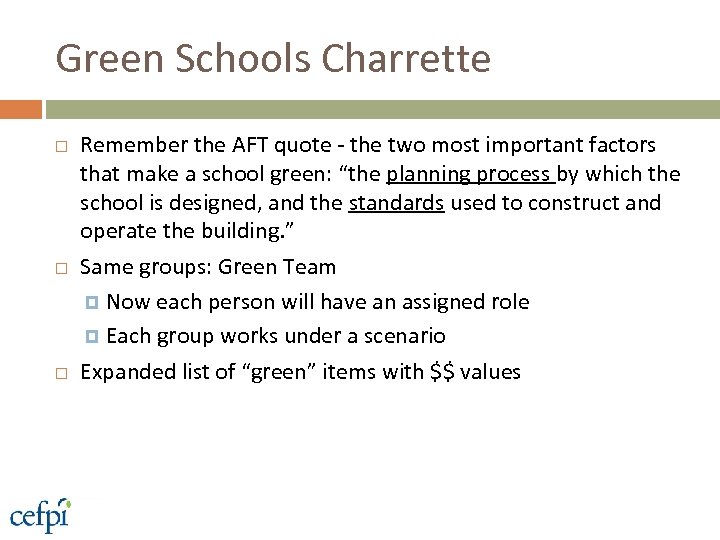 Green Schools Charrette Remember the AFT quote - the two most important factors that make a school green: “the planning process by which the school is designed, and the standards used to construct and operate the building. ” Same groups: Green Team Now each person will have an assigned role Each group works under a scenario Expanded list of “green” items with $$ values
Green Schools Charrette Remember the AFT quote - the two most important factors that make a school green: “the planning process by which the school is designed, and the standards used to construct and operate the building. ” Same groups: Green Team Now each person will have an assigned role Each group works under a scenario Expanded list of “green” items with $$ values
 Green Schools Charrette Task 1: From within roles – chose a leader who the group deems the most appropriate Task 2: Develop a strategy / unifying theme Task 3: Working as a group, develop a green building program from the list of green items: Requirement 1: Stay within given budget Requirement 2: Act within your roles and work for your priorities There is no requirement to meet a “certification” standard or particular items / categories – the group is to develop the decision making rule for item selection. Task 4: Report back to the larger group
Green Schools Charrette Task 1: From within roles – chose a leader who the group deems the most appropriate Task 2: Develop a strategy / unifying theme Task 3: Working as a group, develop a green building program from the list of green items: Requirement 1: Stay within given budget Requirement 2: Act within your roles and work for your priorities There is no requirement to meet a “certification” standard or particular items / categories – the group is to develop the decision making rule for item selection. Task 4: Report back to the larger group
 Green Team Charrette Scenario: Modernization of a High School in an Urban School District Roles: Architect: Your firm is a leader in sustainable design and you were previously involved in a LEED-S Project that was certified at the Gold level. Principal: You were hired two years ago and recruited specifically to help raise test scores. Your staff has a high turnover rate and the school is under enrolled. Parent: You head up a local grass roots effort for healthy schools with a heavy focus on low impact development and healthy diets. Your children are currently enrolled in elementary and middle school. Director of Facilities: You have been in your position for ten years and oversee 100 buildings. The average tenure of your building support and engineer staff is 30 -years. Your budget is very tight and to-date, no new construction or major renovations have been certified under the LEED program. School Superintendant: You are the figure head of the public schools and report to the city’s school governing body. You have been in your position for four years. You are charged with making the schools into a safer, healthier environment while improving overall academic performance. If a 7 th group member is present…. Project Manager: You will be responsible for managing the architect and builder’s contract through out the project. You must keep the project on time and on budget. You have no experience with green or LEED projects.
Green Team Charrette Scenario: Modernization of a High School in an Urban School District Roles: Architect: Your firm is a leader in sustainable design and you were previously involved in a LEED-S Project that was certified at the Gold level. Principal: You were hired two years ago and recruited specifically to help raise test scores. Your staff has a high turnover rate and the school is under enrolled. Parent: You head up a local grass roots effort for healthy schools with a heavy focus on low impact development and healthy diets. Your children are currently enrolled in elementary and middle school. Director of Facilities: You have been in your position for ten years and oversee 100 buildings. The average tenure of your building support and engineer staff is 30 -years. Your budget is very tight and to-date, no new construction or major renovations have been certified under the LEED program. School Superintendant: You are the figure head of the public schools and report to the city’s school governing body. You have been in your position for four years. You are charged with making the schools into a safer, healthier environment while improving overall academic performance. If a 7 th group member is present…. Project Manager: You will be responsible for managing the architect and builder’s contract through out the project. You must keep the project on time and on budget. You have no experience with green or LEED projects.
 Green Team Charrette Scenario: New construction of an Elementary School in a Suburban School District Roles: Architect: Your firm is a leader in sustainable design and you were previously involved in a LEED-S Project that was certified at the Gold level. Principal: You were hired two years ago and recruited specifically to help raise test scores. Your staff has a high turnover rate and the school is under enrolled. Parent: You head up a local grass roots effort for healthy schools with a heavy focus on low impact development and healthy diets. Your children are currently enrolled in elementary and middle school. Director of Facilities: You have been in your position for ten years and oversee 10 buildings. The average tenure of your building support and engineer staff is 30 -years. Your budget is very tight and to-date, no new construction or major renovations have been certified under the LEED program. School Superintendant: You are the figure head of the public schools and report to the city’s school governing body. You have been in your position for four years. You are charged with making the schools into a safer, healthier environment while improving overall academic performance. If a 7 th group member is present…. Project Manager: You will be responsible for managing the architect and builder’s contract through out the project. You must keep the project on time and on budget. You have no experience with green or LEED projects.
Green Team Charrette Scenario: New construction of an Elementary School in a Suburban School District Roles: Architect: Your firm is a leader in sustainable design and you were previously involved in a LEED-S Project that was certified at the Gold level. Principal: You were hired two years ago and recruited specifically to help raise test scores. Your staff has a high turnover rate and the school is under enrolled. Parent: You head up a local grass roots effort for healthy schools with a heavy focus on low impact development and healthy diets. Your children are currently enrolled in elementary and middle school. Director of Facilities: You have been in your position for ten years and oversee 10 buildings. The average tenure of your building support and engineer staff is 30 -years. Your budget is very tight and to-date, no new construction or major renovations have been certified under the LEED program. School Superintendant: You are the figure head of the public schools and report to the city’s school governing body. You have been in your position for four years. You are charged with making the schools into a safer, healthier environment while improving overall academic performance. If a 7 th group member is present…. Project Manager: You will be responsible for managing the architect and builder’s contract through out the project. You must keep the project on time and on budget. You have no experience with green or LEED projects.
 Green Team Charrette Overall Strategy / Unifying Theme: Goals & Values: Resources & Capabilities: Structure & Systems:
Green Team Charrette Overall Strategy / Unifying Theme: Goals & Values: Resources & Capabilities: Structure & Systems:
 Green Team Charrette Green Team Notes:
Green Team Charrette Green Team Notes:
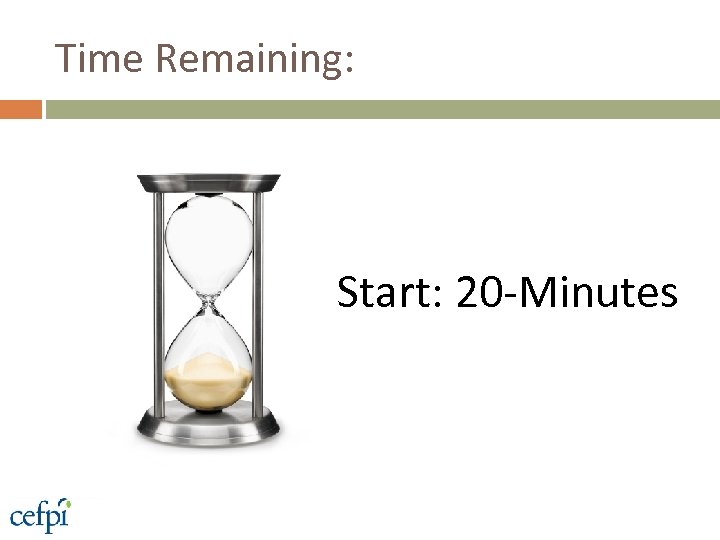 Time Remaining: Start: 20 -Minutes
Time Remaining: Start: 20 -Minutes
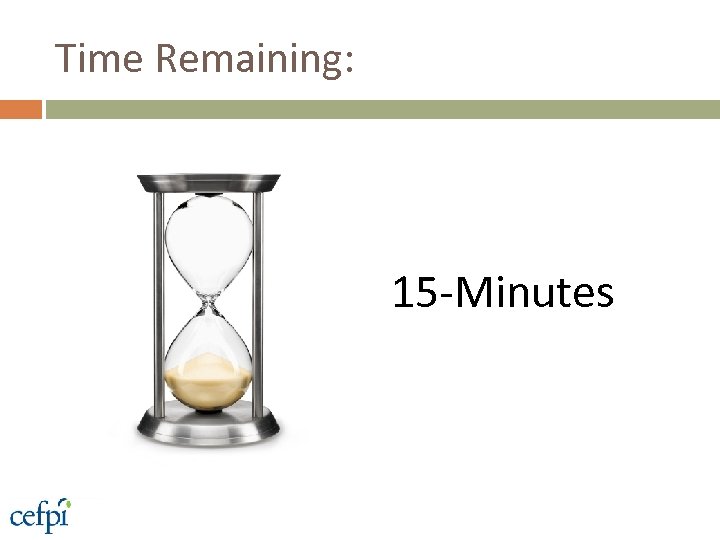 Time Remaining: 15 -Minutes
Time Remaining: 15 -Minutes
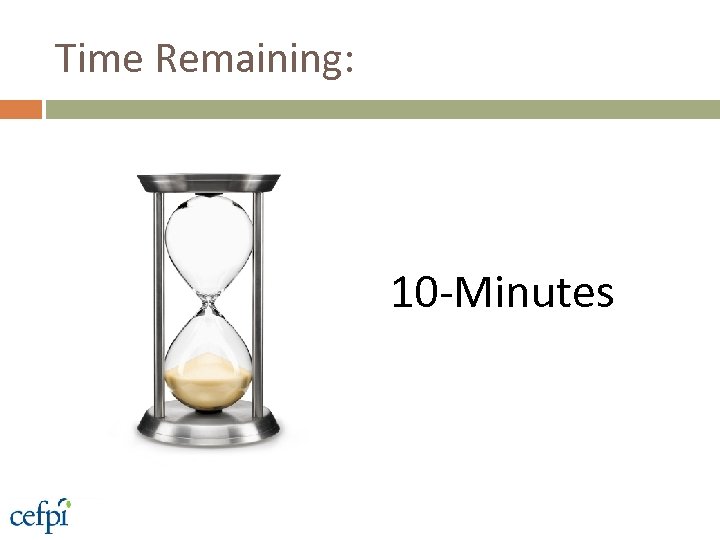 Time Remaining: 10 -Minutes
Time Remaining: 10 -Minutes
 Time Remaining: 8 -Minutes
Time Remaining: 8 -Minutes
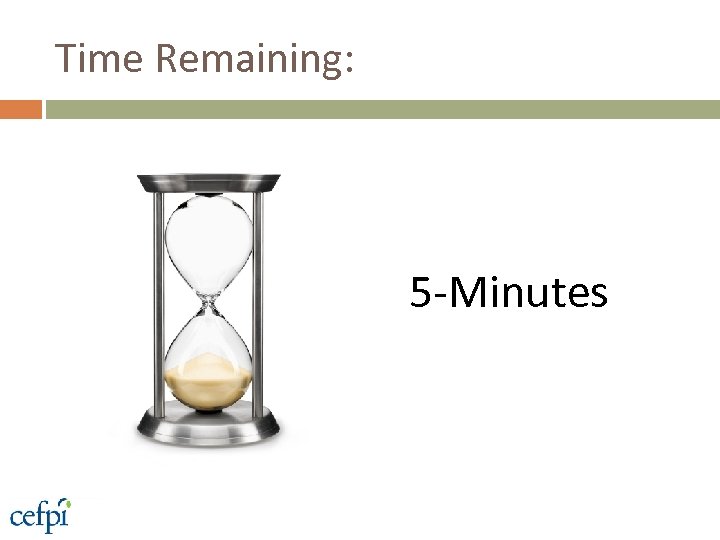 Time Remaining: 5 -Minutes
Time Remaining: 5 -Minutes
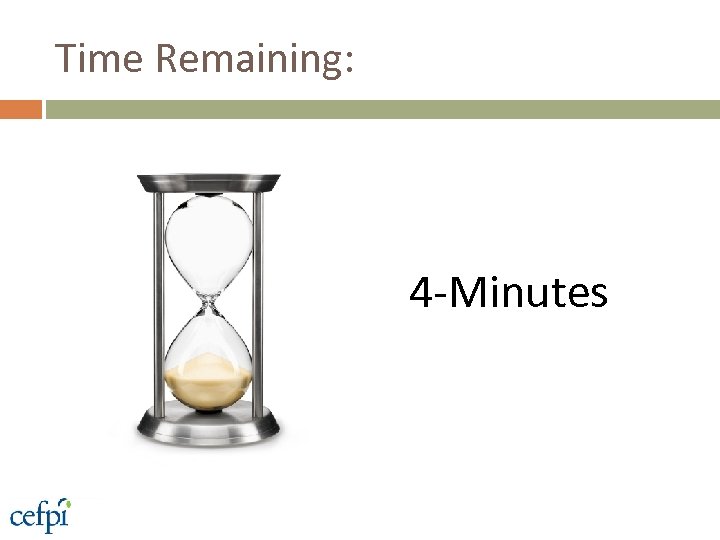 Time Remaining: 4 -Minutes
Time Remaining: 4 -Minutes
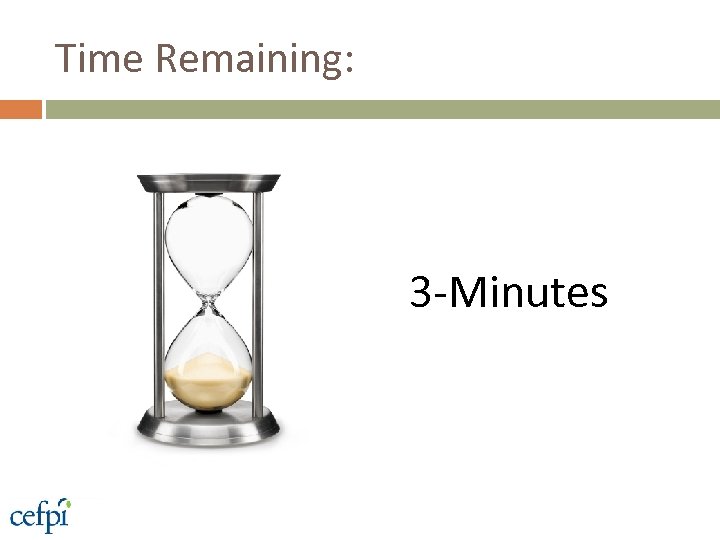 Time Remaining: 3 -Minutes
Time Remaining: 3 -Minutes
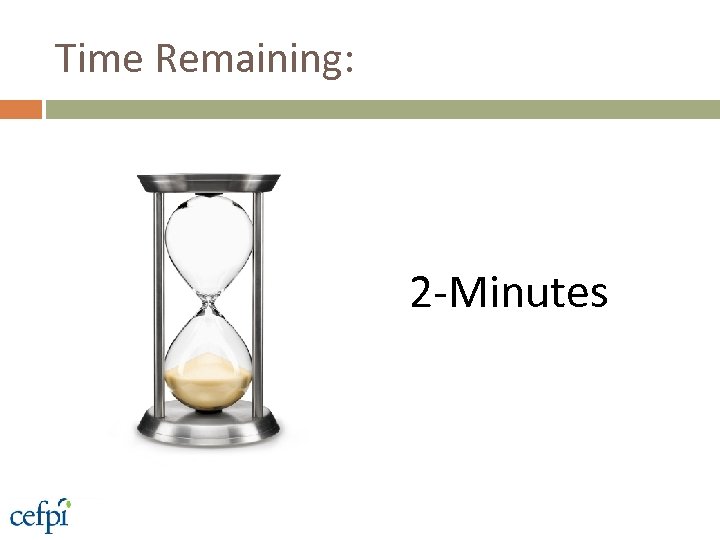 Time Remaining: 2 -Minutes
Time Remaining: 2 -Minutes
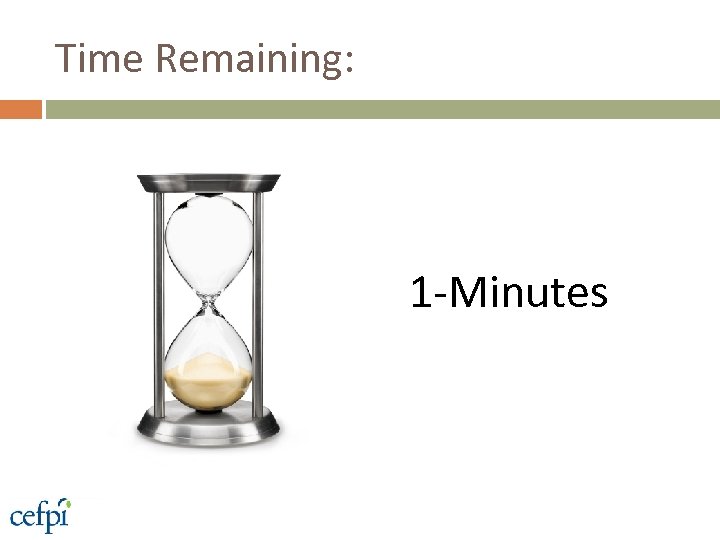 Time Remaining: 1 -Minutes
Time Remaining: 1 -Minutes
 Time Remaining: Done!!
Time Remaining: Done!!
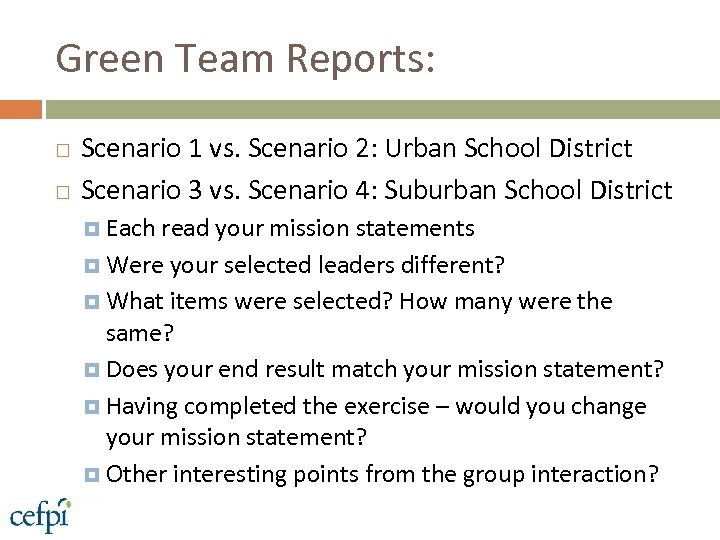 Green Team Reports: Scenario 1 vs. Scenario 2: Urban School District Scenario 3 vs. Scenario 4: Suburban School District Each read your mission statements Were your selected leaders different? What items were selected? How many were the same? Does your end result match your mission statement? Having completed the exercise – would you change your mission statement? Other interesting points from the group interaction?
Green Team Reports: Scenario 1 vs. Scenario 2: Urban School District Scenario 3 vs. Scenario 4: Suburban School District Each read your mission statements Were your selected leaders different? What items were selected? How many were the same? Does your end result match your mission statement? Having completed the exercise – would you change your mission statement? Other interesting points from the group interaction?
 Questions? A+
Questions? A+
 Thank you for attending A+
Thank you for attending A+


